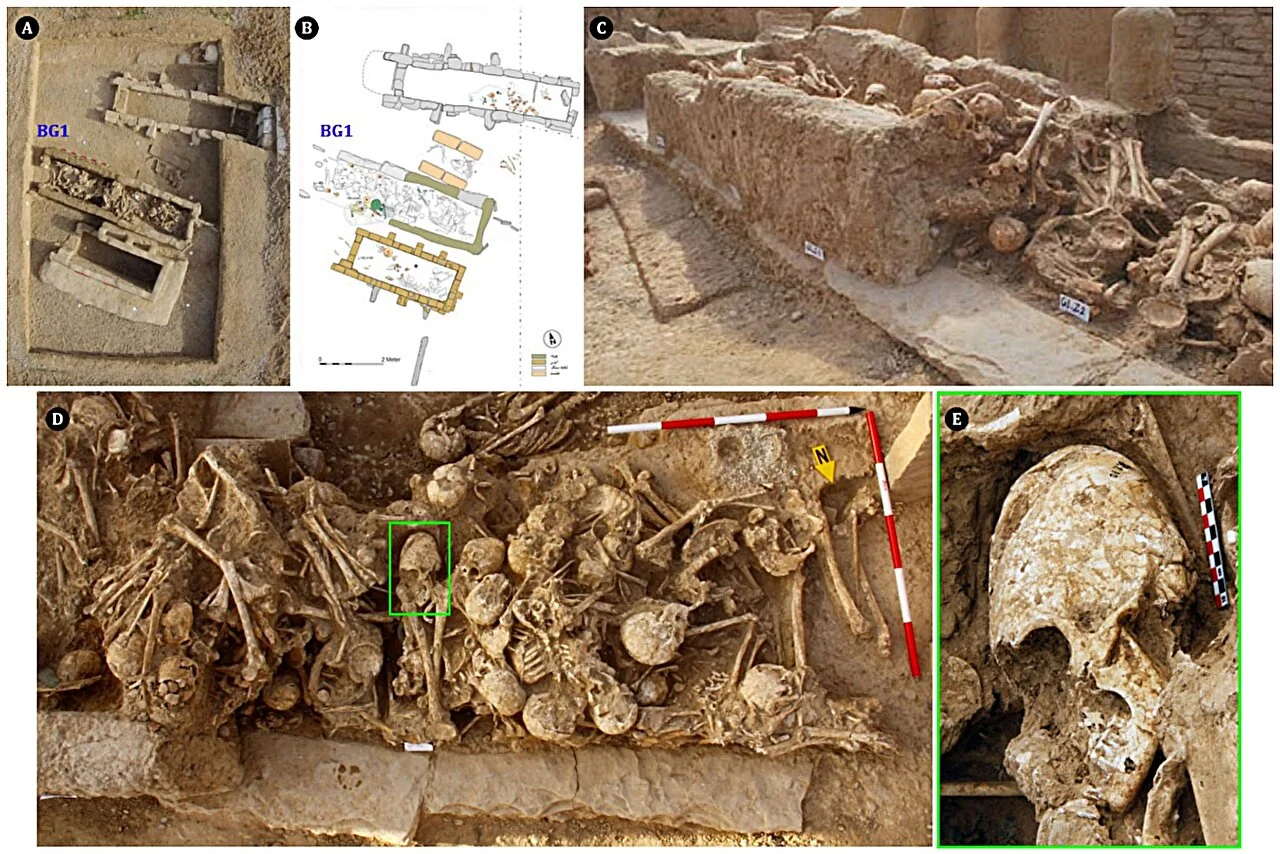Anthropology
Related: About this forumYoung Woman with Cone-Shaped Skull Suffered Fatal Blow 6,000 Years Ago
June 12, 2025
CHEGA SOFLA, IRAN—Science News Today reports that archaeologists excavating a Copper Age cemetery in western Iran recently noticed the unusual skull of a young woman among the burials. Her elongated and cone-shaped cranium clearly indicated that when she was younger, she had undergone some type of skull modification, a process that usually involves the binding of a child’s head with cloth during their formative years. The report notes that for many cultures across the globe, from the Central American Maya to the Huns of Eurasia, cranial shaping was a symbol of beauty, status, or identity. In this case, the researchers believe, it may have marked the girl as someone of significance 6,200 years ago. Upon further examination, however, they also noticed a skull fracture indicating that the young girl, who was not yet 20, had suffered a devastating blunt force blow to the head that certainly killed her. They suggest that although her skull bones were thinner and weaker as a result of the modification process, the head trauma was so severe that it would have killed her even if she had never been subject to the procedure. It is still unclear whether she was deliberately murdered or suffered some kind of accident. To read about the practice of children's cranial modification along the Peruvian coast a millennium ago, go to "Peru's Great Urban Experiment."
https://archaeology.org/news/2025/06/12/young-woman-with-cone-shaped-skull-suffered-fatal-blow-6000-years-ago/
Judi Lynn
(163,919 posts)Muhammad TuhinJune 11, 2025

The location of BG1 in Workshop B of the Chega Sofla cemetery and its rectangular structure (A and B). A view of the multiple-burial grave BG1 and the individuals buried within it (C). Western part of BG1 and location of BG1.12 (D); the burial of BG1.12 (E) (archive of Zohreh Prehistoric Project). Credit: International Journal of Osteoarchaeology (2025). DOI: 10.1002/oa.3415
In the heart of western Iran, where the winds sweep over the low hills of Ilam Province and the earth has kept its secrets for millennia, two archaeologists have unearthed a haunting relic of the distant past. At a sprawling ancient cemetery known as Chega Sofla, among bones long forgotten and tombs of brick worn by time, researchers discovered the skull of a young girl—delicately deformed and fatally fractured. Her story, buried for over six thousand years, is now being told for the first time.
A Skull in the Dust
For more than a decade, excavations at Chega Sofla have peeled back the layers of a prehistoric settlement, one grave at a time. Single burials, family plots, and communal graves whisper of customs lost to time. Among them, a peculiar pattern has emerged—some skulls, particularly those of women and girls, bear the unmistakable signs of cranial modification.
It was in this context that Dr. Mahdi Alirezazadeh and Dr. Hamed Vahdati Nasab, seasoned archaeologists and osteoarchaeologists with a deep understanding of Iran’s ancient cultures, uncovered a skull that stopped them in their tracks.
“She was young,” Dr. Alirezazadeh recalls. “No older than twenty. And her head had been shaped—deliberately, systematically—into a smooth, cone-like form.”
More:
https://www.sciencenewstoday.org/skull-of-a-young-girl-tells-a-haunting-story-from-6200-years-ago